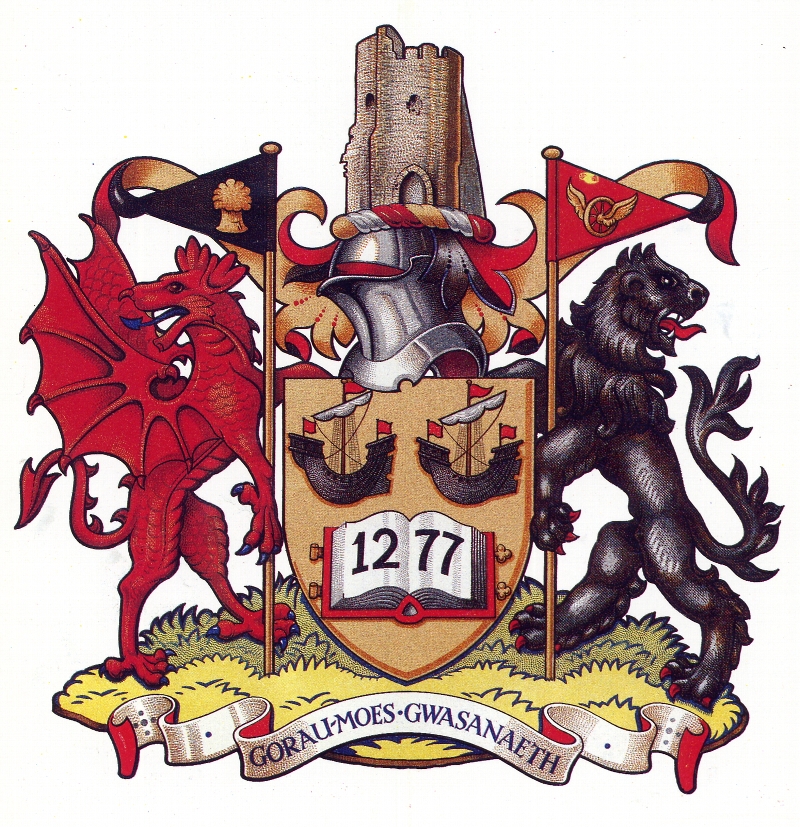An Overview of Wales
最終更新2010年03月26日(金) 09時31分

The Crest
An Overview of Wales
Nature
- Wales is blessed with an abundance of wilderness and dynamic natural beauty. To the North is Snowdonia National Park, with clusters of rugged peaks at its centre; to the South are the idyllic mountains of Brecon Beacons National Park; and stretched along the rugged coastline is Pembrokeshire Coast National Park, blessing the area with contrast and diversity.
With rivers that never run dry, the land is fertile and green; and the pure spa water that flows from the ground is second to none. The ancient Celts believed that the water covering the planet had soul. The god of water - a dragon - continues to be the guardian deity of Wales, and the water that has flowed for eternity continues to bring life to the earth.
Climate
- Covering an area 20,270 square km (7826 sq. miles), Wales is slightly larger the Japanese island of Shikoku. Influenced by the warm ocean currents flowing nearby, the climate is relatively warm all year-round. Spring brings patches of yellow as fields of daffodils - the National flower - bloom in chorus.
History
- The history of Wales is ancient. Ironware has been found that suggests the ancestors of the people of Wales, the Celts, brought it with them to the British around 500 B.C. To the Celts, nature was sacred and they worshipped it through distinctive songs and poetry. This rich Celtic heritage is strong today, particularly in the pleasant music of the Celtic harp, strongly associated with Wales.
The Romans arrived on the island of Britain in the year 43 A.D., as part of their conquest of Europe. In the mid-5th century the Roman British Isles were occupied by the Anglo-Saxons, including the reign of the legendary King Arthur. The people of Wales stake a strong claim to King Arthur, many believe in his last words, "Someday, I will return", he spoke as he faded away near a lake.
It is said that early in the 7th century, with many Celts driven from the region, the unique culture of Wales began to grow into was it is today. After the invasion of the Normans in the 11th century, when the last Prince of Wales was killed in battle in 1282, Wales was annexed by England under the command of King Edward the First. In 1485 the Welsh Earl, Henry Tudor, ascended to the English throne; further unifying Wales and England, particularly in areas of laws and economics. In 1536 further unification was brought about by the Act of Union, making English the official language. Despite the education system also converting to English instruction, the people of Wales continued to speak the Welsh language. The 16th century saw a revival of the Welsh language as Bibles, text books, and dictionaries were compiled in Welsh. In 1913 John Morris-Jones advocated for the cleaning up of the language and his publications set a firm foundation for the language, protecting it for future generations.
As recent as 1967, the Welsh Language Act made Welsh an official language, and revived Welsh bilingual education. Today, approximately 20 percent of the people of Wales (population approx. 3 million) can speak Welsh; the survival of Welsh language and culture was possible because of persistent efforts on the part of the people of Wales. The revival and development of Celtic heritage continues, and the footprints of ancient arts and culture can be found throughout the region.
Language
- The Welsh spoken today is a member of the Brittonic branch of the Celtic family of languages, and is one of the oldest languages in existence. Welsh is referred to as Cymraeg, roughly translated as "Comrades" referring to people bonded to face a common threat - the Saxons and Vikings. The two official languages, English and Welsh, can be seen on signs around the area, such as the large signs displaying both "Croeso i GYMRU" and "Welcome to WALES" to warmly welcome travelers.
Greetings in Welsh
- Good morning - Bore da
- Good afternoon - P'nawn da
- Good night - Nos dda
- How are you? - Sut mae?
- Good bye - Hwyl

